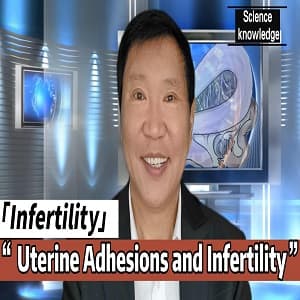The relationship between uterine adhesions and infertility has been a subject of significant attention. Uterine adhesions can not only lead to difficulties in conceiving but also result in complications such as recurrent miscarriages, ectopic pregnancies, and chemical pregnancies. So, what is the true underlying cause of uterine adhesions? The primary factor is excessive manipulation of the uterine cavity, including repetitive procedures like uterine lavage, diagnostic curettage, and repeated abortions.

链接:https://pan.baidu.com/s/1o7RnAtR41yCtuJiw_UXgcQ
提取码:fupu
These excessive interventions can damage the basal layer of the endometrium. The endometrium is divided into two layers: the functional layer, which is shed during menstruation and is not affected by adhesions, and the basal layer, which is responsible for regenerating the functional layer. When the basal layer is disrupted, adhesions can form due to the absence of functional endometrial tissue. Uterine adhesions are classified into three degrees.
First-degree adhesions are membranous adhesions that can often be resolved through minimally invasive procedures such as hysteroscopic separation and the use of a uterine mold. Second-degree adhesions are fibrous adhesions that are more severe and challenging to separate, as they involve adhesion between basal layers. Third-degree adhesions are muscular adhesions where the basal layer is lost, and the anterior and posterior walls of the uterus adhere together. This is the most severe form of adhesion, often leading to amenorrhea and presenting more than just reduced menstrual flow. Symptoms may include amenorrhea, decreased menstrual flow, dysmenorrhea, and a significant reduction in the number of sanitary pads needed compared to previous cycles. Most cases of uterine adhesions fall under the category of secondary adhesions.
Diagnostic procedures such as contrast imaging (hysterosalpingography) are useful for assessing the first two degrees of adhesions. However, severe adhesions may obstruct the passage of contrast, making it impossible to visualize the uterine cavity. Hysteroscopy and ultrasound (transvaginal 4D color Doppler) are the primary diagnostic tools, as uterine adhesions are characterized by thin, irregular, and indistinct endometrial lining. The panoramic 4D color Doppler ultrasound provides a comprehensive view, enabling clear observation of the location and severity of adhesions, including their size and extent.
In terms of treatment, the main approach is adhesion lysis or adhesiolysis to separate the adhesions. However, without uterine molding techniques, adhesions may reform and potentially worsen after lysis. This is especially true for individuals with concomitant endometrial damage and infections, such as those caused by specific bacteria, sexually transmitted diseases, tuberculosis, or syphilis. Therefore, surgery should not be undertaken lightly and should be accompanied by the use of a uterine mold.
Our developed uterine mold features a bio-anti-adhesion membrane on its surface, which is placed in the uterine cavity after adhesiolysis. After 2-3 months, when the mold is removed, the endometrium often regenerates. This method is suitable for cases of mild to moderate adhesions. In cases of severe adhesions, this approach is not viable, and successful treatment requires the transplantation of compatible endometrial tissue and the placement of a uterine mold.
This procedure, known as uterine endometrial transplantation, involves the transplantation of donated endometrial tissue into the patient’s body. The transplanted endometrium must consist of the basal layer, as only the basal layer can fulfill the role of generating a functional layer. Endometrial tissue obtained through curettage cannot be used for transplantation and requires specialized instruments and equipment for retrieval. With proper matching, uterine molding surgery and endometrial transplantation can be performed, helping patients restore their menstrual cycles and achieve successful pregnancies.
For patients with mild to moderate uterine adhesions, Beijing Antai Hospital offers contracted treatment services. After surgery, patients’ menstrual cycles are expected to return to normal, increasing their chances of successful conception. However, for patients with severe adhesions, the only option available is uterine endometrial transplantation. In cases where a suitable source of endometrium is unavailable or transplantation fails, surrogacy becomes a viable alternative. Surrogacy involves utilizing donated eggs and sperm to achieve the dream of having biological children.
 安太医院
安太医院







您好!请登录